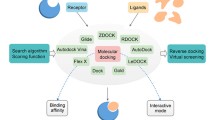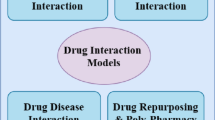Abstract
Dipeptidyl peptidase IV (DPP-IV) is a promising Type 2 diabetes mellitus (T2DM) drug target. DPP-IV inhibitors prolong the action of glucagon-like peptide-1 (GLP-1) and gastric inhibitory peptide (GIP), improve glucose homeostasis without weight gain, edema, and hypoglycemia. However, the marketed DPP-IV inhibitors have adverse effects such as nasopharyngitis, headache, nausea, hypersensitivity, skin reactions and pancreatitis. Therefore, it is still expected for novel DPP-IV inhibitors with minimal adverse effects. The scaffolds of existing DPP-IV inhibitors are structurally diversified. This makes it difficult to build virtual screening models based upon the known DPP-IV inhibitor libraries using conventional QSAR approaches. In this paper, we report a new strategy to predict DPP-IV inhibitors with machine learning approaches involving naïve Bayesian (NB) and recursive partitioning (RP) methods. We built 247 machine learning models based on 1307 known DPP-IV inhibitors with optimized molecular properties and topological fingerprints as descriptors. The overall predictive accuracies of the optimized models were greater than 80%. An external test set, composed of 65 recently reported compounds, was employed to validate the optimized models. The results demonstrated that both NB and RP models have a good predictive ability based on different combinations of descriptors. Twenty “good” and twenty “bad” structural fragments for DPP-IV inhibitors can also be derived from these models for inspiring the new DPP-IV inhibitor scaffold design.








Similar content being viewed by others
References
Mentzel S, Dijkman HB, Van Son JP, Koene RA, Assmann KJ (1996) Organ distribution of aminopeptidase A and dipeptidyl peptidase IV in normal mice. J Histochem Cytochem 44(5):445–461
Drucker DJ, Nauck MA (2006) The incretin system: glucagon-like peptide-1 receptor agonists and dipeptidyl peptidase-4 inhibitors in type 2 diabetes. The Lancet 368(9548):1696–1705. doi:10.1016/s0140-6736(06)69705-5
Hopsu-Havu VK, Glenner GG (1966) A new dipeptide naphthylamidase hydrolyzing glycyl-prolyl-beta-naphthylamide. Histochemie 7(3):197–201
Rasmussen HB, Branner S, Wiberg FC, Wagtmann N (2003) Crystal structure of human dipeptidyl peptidase IV/CD26 in complex with a substrate analog. Nat Struct Biol 10(1):19–25. doi:10.1038/nsb882
Tanaka T, Camerini D, Seed B, Torimoto Y, Dang NH, Kameoka J, Dahlberg HN, Schlossman SF, Morimoto C (1992) Cloning and functional expression of the T cell activation antigen CD26. J Immunol 149(2):481–486
Yoshida T, Akahoshi F, Sakashita H, Sonda S, Takeuchi M, Tanaka Y, Nabeno M, Kishida H, Miyaguchi I, Hayashi Y (2012) Fused bicyclic heteroarylpiperazine- substituted L-prolylthiazolidines as highly potent DPP-4 inhibitors lacking the electrophilic nitrile group. Bioorg Med Chem 20(16):5033–5041. doi:10.1016/j.bmc.2012.06.033
Watanabe YS, Yasuda Y, Kojima Y, Okada S, Motoyama T, Takahashi R, Oka M (2015) Anagliptin, a potent dipeptidyl peptidase IV inhibitor: its single-crystal structure and enzyme interactions. J Enzyme Inhib Med Chem 30(6):981–988. doi:10.3109/14756366.2014.1002402
Nabeno M, Akahoshi F, Kishida H, Miyaguchi I, Tanaka Y, Ishii S, Kadowaki T (2013) A comparative study of the binding modes of recently launched dipeptidyl peptidase IV inhibitors in the active site. Biochem Biophys Res Commun 434(2):191–196. doi:10.1016/j.bbrc.2013.03.010
Patel BD, Ghate MD (2014) Recent approaches to medicinal chemistry and therapeutic potential of dipeptidyl peptidase-4 (DPP-4) inhibitors. Eur J Med Chem 74:574–605. doi:10.1016/j.ejmech.2013.12.038
Green BD, Flatt PR, Bailey CJ (2006) Dipeptidyl peptidase IV (DPP IV) inhibitors: A newly emerging drug class for the treatment of type 2 diabetes. Diab Vasc Dis Res 3(3):159–165. doi:10.3132/dvdr.2006.024
Scheen AJ (2013) Cardiovascular effects of gliptins. Nat Rev Cardiol 10(2):73–84. doi:10.1038/nrcardio.2012.183
Barreira da Silva R, Laird ME, Yatim N, Fiette L, Ingersoll MA, Albert ML (2015) Dipeptidylpeptidase 4 inhibition enhances lymphocyte trafficking, improving both naturally occurring tumor immunity and immunotherapy. Nat Immunol 16(8):850–858. doi:10.1038/ni.3201
Zhong J, Rao X, Deiuliis J, Braunstein Z, Narula V, Hazey J, Mikami D, Needleman B, Satoskar AR, Rajagopalan S (2013) A potential role for dendritic cell/macrophage-expressing DPP4 in obesity-induced visceral inflammation. Diabetes 62(1):149–157. doi:10.2337/db12-0230
Hiramatsu H, Kyono K, Higashiyama Y, Fukushima C, Shima H, Sugiyama S, Inaka K, Yamamoto A, Shimizu R (2003) The structure and function of human dipeptidyl peptidase IV, possessing a unique eight-bladed beta-propeller fold. Biochem Biophys Res Commun 302(4):849–854. doi:10.1016/S006-291X(03)00258-4
Juillerat-Jeanneret L (2014) Dipeptidyl peptidase IV and its inhibitors: therapeutics for type 2 diabetes and what else?. J Med Chem 57(6):2197–2212. doi:10.1021/jm400658e
Patel BD, Ghate MD (2014) 3D-QSAR studies of dipeptidyl peptidase-4 inhibitors using various alignment methods. Med Chem Res 24(3):1060–1069. doi:10.1007/s00044-014-1178-7
Kang NS, Ahn JH, Kim SS, Chae CH, Yoo SE (2007) Docking-based 3D-QSAR study for selectivity of DPP4, DPP8, and DPP9 inhibitors. Bioorg Med Chem Lett 17(13):3716–3721. doi:10.1016/j.bmcl.2007.04.031
Lavecchia A (2015) Machine-learning approaches in drug discovery: methods and applications. Drug Discov Today 20(3):318–331. doi:10.1016/j.drudis.2014.10.012
Lima AN, Philot EA, Trossini GHG, Scott LPB, Maltarollo VG, Honorio KM (2016) Use of machine learning approaches for novel drug discovery. Expert Opin Drug Discov 11(3):225–239. doi:10.1517/17460441.2016.1146250
Durrant JD, de Oliveira CA, McCammon JA (2011) POVME: an algorithm for measuring binding-pocket volumes. J Mol Graph Model 29(5):773–776. doi:10.1016/j.jmgm.2010.10.007
Durrant JD, Votapka L, Sorensen J, Amaro RE (2014) POVME 2.0: an enhanced tool for determining pocket shape and volume characteristics. J Chem Theory Comput 10(11):5047–5056. doi:10.1021/ct500381c
Chen L, Li Y, Zhao Q, Peng H, Hou T (2011) ADME evaluation in drug discovery. 10. Predictions of P-glycoprotein inhibitors using recursive partitioning and naive Bayesian classification techniques. Mol Pharm 8(3):889–900. doi:10.1021/mp100465q
Fang JS, Yang RY, Gao L, Zhou D, Yang SQ, Liu AL, Du GH (2013) Predictions of BuChE inhibitors using support vector machine and naive Bayesian classification techniques in drug discovery. J Chem Inf Model 53(11):3009–3020. doi:10.1021/ci400331p
Tian S, Li Y, Wang J, Zhang J, Hou T (2011) ADME evaluation in drug discovery. 9. Prediction of oral bioavailability in humans based on molecular properties and structural fingerprints. Mol Pharm 8(3):841–851. doi:10.1021/mp100444g
McIntyre TA, Han C, Davis CB (2009) Prediction of animal clearance using naive Bayesian classification and extended connectivity fingerprints. Xenobiotica 39(7):487–494. doi:10.1080/00498250902926906
Wang L, Chen L, Liu ZH, Zheng MH, Gu Q, Xu J (2014) Predicting mTOR inhibitors with a classifier using recursive partitioning and naive Bayesian approaches. Plos One 9(5). doi:10.1371/journal.pone.0095221
Nigsch F, Bender A, Jenkins JL, Mitchell JBO (2008) Ligand-target prediction using Winnow and Naive Bayesian algorithms and the implications of overall performance Statistics. J Chem Inf Model 48(12):2313–2325. doi:10.1021/ci800079x
Glick M, Jenkins JL, Nettles JH, Hitchings H, Davies JW (2006) Enrichment of high-throughput screening data with increasing levels of noise using support vector machines, recursive partitioning, and Laplacian-modified naive Bayesian classifiers. J Chem Inf Model 46(1):193–200. doi:10.1021/ci050374h
Xia XY, Maliski EG, Gallant P, Rogers D (2004) Classification of kinase inhibitors using a Bayesian model. J Med Chem 47(18):4463–4470. doi:10.1021/jm0303195
De’ath G, Fabricius KE (2000) Classification and regression trees: a powerful yet simple technique for ecological data analysis. Ecology 81(11):3178–3192. doi:10.1890/0012-9658(2000)081[3178:Cartap]2.0.Co;2
Baldi P, Brunak S, Chauvin Y, Andersen CAF, Nielsen H (2000) Assessing the accuracy of prediction algorithms for classification: an overview. Bioinformatics 16(5):412–424
Xu J (2002) A new approach to finding natural chemical structure classes. J Med Chem 45(24):5311–5320. doi:10.1021/jm010520k
Acknowledgements
This work was supported by the National Science Foundation of China (81473138, 81573310), Guangdong Province Science and Technology Planning Project (2016A020217002), Guangdong Province Frontier and Key Technology Innovation Program (2015B010109004), Guangdong National Science Foundation (2016A030310228) and Guangdong NSF (2016A030310228). We also thank Professor Johann Gasteiger for his advice and proof-reading the manuscript.
Author information
Authors and Affiliations
Corresponding author
Rights and permissions
About this article
Cite this article
Cai, J., Li, C., Liu, Z. et al. Predicting DPP-IV inhibitors with machine learning approaches. J Comput Aided Mol Des 31, 393–402 (2017). https://doi.org/10.1007/s10822-017-0009-6
Received:
Accepted:
Published:
Issue Date:
DOI: https://doi.org/10.1007/s10822-017-0009-6




